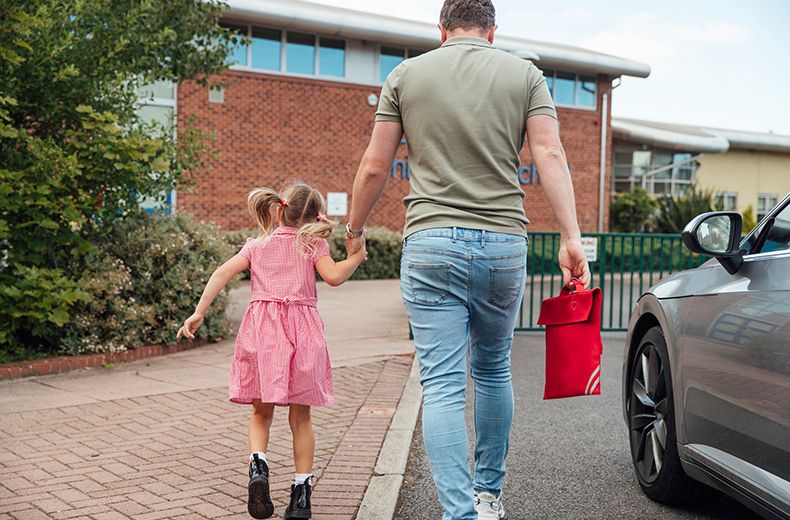Car volumes were up 55% at these times compared to the week beginning 24 August, before most schools had resumed lessons in classrooms.
A large rise in trips starting at 8am suggests parents are getting back behind the wheel while they continue to work away from the office.
The latest figures from the Office for National Statistics found that 20% of the workforce had worked exclusively at home between the 9th and 13th September.
Alarmingly, the figures appear to show that the UK’s morning rush hour is caused more by people dropping children off at schools and nurseries than it is by commuters heading to places of work.
Staggered drop-off windows introduced by many schools to keep transmission rates low appear to have extended the length of the school run across the country.
Those that have children in more than one school or nursery might be finding themselves having to go quickly from one drop off to another, making the car the favoured option.
Car volumes are now around the same level at the end of school ‘rush’ between 3pm and 4pm, and evening ‘rush’ between 5pm and 6pm, as was the case before the first coronavirus lockdown in March.
Daily RAC breakdown figures also show a ‘return to normal’, with mid-week call-outs in particular only a little below those seen during the first few winter months of the year.
Interestingly, since the schools returned, patrols have on average been called out to more rush-hour breakdowns than expected, with fewer later in the day.
- What is rat running and should cut-through traffic be illegal?
- The school run - doing it safely and efficiently during the pandemic
- The school run - your ultimate guide
RAC Insurance spokesperson Rod Dennis said: “It appears dropping off children at schools and nurseries contributes far more to morning traffic in the 8am to 9am window than commuters heading to workplaces does, which is a surprising finding in itself.”
Cars have become the transport mode of choice as fewer people are prepared to take public transport in the current climate.
According to the RAC Report on Motoring, published in October last year, more than a third of UK drivers (35%) said they were more dependent on using their car than a year ago.
Mr Dennis added: “The million-dollar question, of course, is what happens next and whether morning road traffic continues to rise in the autumn, or whether it stays at the sort of level we’re seeing now?”
“The rising number of coronavirus cases, together with the introduction of local lockdowns and the threat of new nationwide restrictions, may also have an impact on people’s willingness to return to public transport.”
Whatever happens, it’s clear that “millions of us will continue to rely on the car for completing the journeys we have to make.”
Are you back on the road? What's the traffic like in your area now? Let us know in the comments below.
5 Star Defaqto rated cover
RAC Comprehensive Car Insurance Plus has been given a 5 Star Rating by Defaqto. Get a quote online today.














